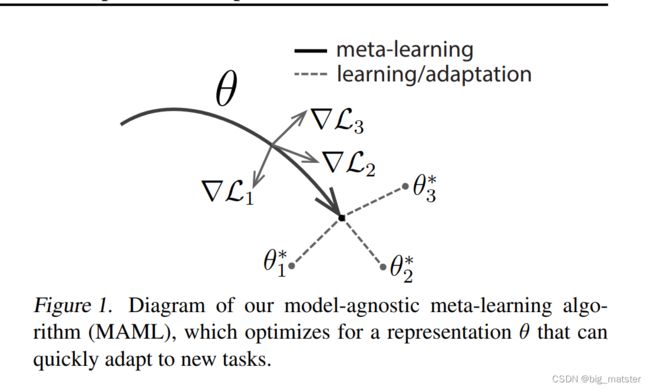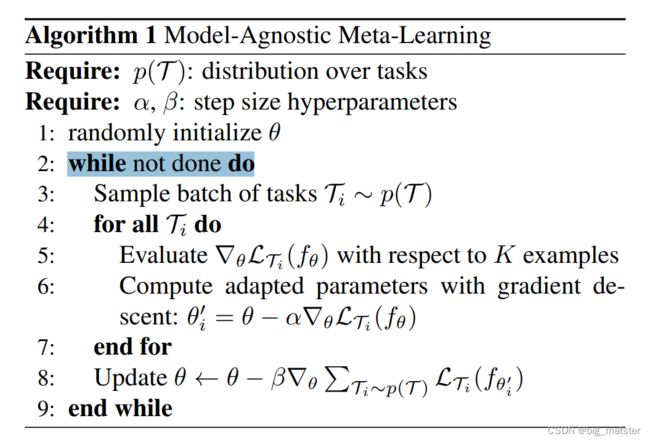- 2024年AI浪潮:基础设施重构、模型演进与挑战并存
前端
2024年,人工智能领域呈现出蓬勃发展的景象,投资持续增长、基础设施发生变革,技术应用加速落地。各大科技公司和初创企业纷纷涌入,试图在这一充满机遇的领域分一杯羹。本文将深入探讨2024年AI发展的三大核心趋势:AI基础设施的重构、模型发展的新趋势以及AI发展带来的挑战,并重点关注企业如何从AI投资中获得回报,以及AI智能体技术的巨大潜力。选择合适的AI代码生成器将成为企业提升效率的关键。AI基础设
- OpenBayes 一周速览丨ShowUI专注GUI自动化,可解析屏幕截图和用户指令;U-MATH数据集上线
公共资源速递5个数据集:U-MATH数学推理数据集AlMedicalChatbot医学对话数据集Tecnalia电子设备废物高光谱数据集WaterlooExploration大规模图像质量评估数据库WasteClassification可回收物及生活垃圾分类数据集3个教程:一键部署QwQ-32B-PreviewHunyuanVideo腾讯混元文生视频DemoShowUl:专注GUI自动化的视觉-语
- AI生成前端页面:解放前端开发,拥抱AI时代的高效
前端
在数字时代,效率是企业和个人的核心竞争力。而对于前端开发人员来说,重复性工作和繁琐的代码编写常常成为效率提升的瓶颈。幸运的是,随着人工智能技术的飞速发展,一个新的时代已经到来——AI代码生成器(例如ScriptEcho)的出现,正以前所未有的方式改变着前端开发的格局。本文将探讨人工智能在日常应用中的广泛影响,并着重介绍如何利用AI技术,例如ScriptEcho,来提升前端开发效率,从而更好地应对当
- 「AI 中国」榜单揭晓,OpenBayes贝式计算入选「大模型最具潜力创业企业 TOP 10」
日前,「AI中国」机器之心2024年度评选正式揭晓,OpenBayes贝式计算有幸入选「大模型最具潜力创业企业TOP10」。作为专业的人工智能媒体与产业服务平台,机器之心于2017年发布了AI榜单「SyncedMachineIntelligenceAwards」,在随后的时间里,伴随AI的跨越式发展,机器之心的年度评选也逐渐成为了产业风向标之一,覆盖的领域、范围更加广泛,维度更加细化。机器之心20
- BOE(京东方)"向新2025”年终媒体智享会落地深圳 "屏”实力赋能产业创新发展
数据库
12月27日,BOE(京东方)“向新2025”年终媒体智享会的收官之站在创新之都深圳圆满举行,为这场为期两周、横跨三地的年度科技盛会画上了完美句号。活动期间,全面回顾了BOE(京东方)2024年在多个关键领域取得的卓越成绩,深入剖析其在六大维度构建的“向新”发展格局,精彩呈现了以“屏”为核心搭建起的技术引领、伙伴赋能以及绿色发展等平台,全方位赋能全球生态合作伙伴,充分彰显BOE(京东方)作为全球领
- 高效员工培训:AI赋能企业发展新纪元
前端
在当今竞争激烈的商业环境中,员工是企业最宝贵的资产。高效的员工培训不仅能提升员工技能,提高工作效率,更能增强企业核心竞争力,推动企业持续发展。然而,传统的员工培训模式往往存在效率低下、成本高昂、缺乏互动性等诸多问题。例如,传统的线下培训需要耗费大量时间和资源,难以满足员工个性化学习需求,培训效果评估也缺乏客观数据支撑。面对这些挑战,人工智能(AI)技术的应用为企业员工培训带来了革命性的变革,为构建
- 技术选型指南:Web、原生、混合开发的对比
前端
随着移动互联网的飞速发展,开发者在选择应用开发方式时,经常面临纯Web开发、原生开发和混合开发的技术决策。每种开发方式都有其独特的优势和适用场景,开发者需根据项目需求、性能要求及跨平台能力做出合适的选择。本文将详细分析这三种开发方式的特点、实现原理及适用场景,同时推荐一些开源框架,并讲解微信小程序的实现方式。我们还将通过简单的代码示例,帮助大家更直观地理解这些技术。一、纯Web开发定义:纯Web开
- 【YOLOv8改进】 YOLOv8 更换骨干网络之 GhostNet :通过低成本操作获得更多特征 (论文笔记+引入代码)
YOLO大师
YOLO论文阅读
YOLO目标检测创新改进与实战案例专栏专栏目录:YOLO有效改进系列及项目实战目录包含卷积,主干注意力,检测头等创新机制以及各种目标检测分割项目实战案例专栏链接:YOLO基础解析+创新改进+实战案例介绍摘要在嵌入式设备上部署卷积神经网络(CNNs)由于有限的内存和计算资源而变得困难。特征图中的冗余是那些成功的CNNs的一个重要特性,但在神经架构设计中很少被研究。本文提出了一种新颖的Ghost模块,
- 论文阅读:Deep Bilateral Learning for Real-Time Image Enhancement-google-hdrnet-slicing
SetMaker
论文阅读
项目地址:https://gitcode.com/google/hdrnethdrnet作为超分领域的经典文章,由google提出主要用来用轻量化的方法来实现高分辨率的图像生成,hdrnet结合cnn可以让更高分辨率的图像部署在板端。如图所示,原始图像比如4k图像,首先分为两个主要模块:grid和guide。grid就是对应图上面的那一条特征提取网络,具体来说,原始图像经过下采样之后,默认256分
- 弹性云在业务环境中的实际应用和优势有什么
服务器
在当今这个瞬息万变的商业时代,企业面临着前所未有的挑战与机遇。为了保持竞争力并实现持续增长,企业不仅需要创新的产品和服务,还需要一个灵活、高效且成本可控的IT基础设施来支撑其业务运营。正是在这样的背景下,弹性云作为云计算技术的核心优势之一,正逐步成为企业业务环境中的关键组成部分。一、弹性云的实际应用弹性云的最大特点在于其能够根据业务需求的实时变化,动态地调整计算资源、存储资源和网络资源。这种高度灵
- OpenVoiceV2:零样本跨语言语音克隆技术,支持多种风格控制
智慧医疗
AIGC语音识别人工智能语音克隆
1openvoicev2介绍语音克隆技术近年来取得了显著进展,但现有方法通常存在着局限性,例如无法灵活控制语音风格、需要大量多语言数据进行训练、生成速度慢等等。为了克服这些挑战,MyShell.ai团队推出了全新的语音克隆技术OpenVoiceV2,它能够在无需额外训练的情况下,仅凭少量参考音频,就能够克隆任何人的声音,并支持多种语音风格控制,以及快速高效的跨语言语音生成。论文地址:http://
- 探索未来视频创作:Tune-A-Video项目深度解析
刘通双Elsie
探索未来视频创作:Tune-A-Video项目深度解析Tune-A-Video[ICCV2023]Tune-A-Video:One-ShotTuningofImageDiffusionModelsforText-to-VideoGeneration项目地址:https://gitcode.com/gh_mirrors/tu/Tune-A-Video在数字艺术与人工智能的交汇点上,Tune-A-Vi
- JavaScript 运算符详解:各类运算符及优先级。
前端基地
javascript运算符优先级算数运算符逻辑运算符一元运算符比较运算符赋值运算符
目录非VIP用户可前往公众号“前端基地”进行免费阅读运算符介绍运算符优先级算数运算符赋值运算符比较运算符逻辑运算符介绍a&&b和a||b一元运算符非VIP用户可前往公众号“前端基地”进行免费阅读运算符介绍以下是各类运算符的详细介绍:运算符描述算术运算符加(+)、减(-)、乘(*)、除(/)、求余数并保留整数(%)、累加(++)、递减(--)赋值运算符=、+=(num+=5等同于num=num+5)
- 在PyTorch框架上训练ImageNet时,Dataloader加载速度慢怎么解决?
cda2024
pytorch人工智能python
在深度学习领域,PyTorch因其灵活性和易用性而受到广泛欢迎。然而,在实际应用中,特别是在处理大规模数据集如ImageNet时,Dataloader的加载速度往往成为瓶颈。本文将深入探讨这一问题,并提供多种解决方案,帮助你在PyTorch框架上高效地训练ImageNet。1.问题背景ImageNet是一个包含超过1400万张图像的大规模数据集,被广泛用于图像分类任务的研究。在PyTorch中,D
- 对于编程零基础,第一个语言是 Python 的人有什么建议?
cda2024
python开发语言
在当今数字化时代,编程已成为一项必备技能。无论你是想成为一名专业的软件开发人员,还是希望在数据分析、人工智能等领域有所建树,掌握一门编程语言都是至关重要的第一步。对于许多初学者来说,Python是一个理想的选择。它不仅语法简洁易懂,而且拥有强大的社区支持和丰富的库资源。那么,对于编程零基础且选择Python作为第一门语言的人,有哪些实用的建议呢?1.建立正确的学习心态1.1持之以恒学习编程并不是一
- OpenAI进军实体机器人:GPT赋能的智能未来
前端
近年来,人工智能技术飞速发展,深刻地改变着我们的生活。而OpenAI作为人工智能领域的领军者,其最新动作更是引人注目:进军实体机器人领域!这不仅标志着人工智能技术应用场景的重大拓展,也预示着未来智能机器人时代的加速到来。本文将深入探讨OpenAI的实体机器人战略,分析其背后的深层逻辑,并展望其未来发展趋势与挑战。OpenAI的战略布局:从AI模型到实体机器人OpenAI在人工智能领域已取得了令人瞩
- PyCharm安装PyQt5及工具详细教程
JustLikeRun
pycharmqtidepyqt
PyCharm安装PyQt5及工具详细教程PyCharm是一款功能强大的Python集成开发环境(IDE),而PyQt5是一个用于创建GUI应用程序的流行Python库。在本教程中,我将指导您如何在PyCharm中安装PyQt5及其相关工具,并提供相应的源代码示例。步骤1:安装PyCharm首先,您需要下载并安装PyCharm。您可以从JetBrains官方网站(https://www.jetbr
- 2025年全球及中国金刚线开方机行业头部企业市场占有率及排名调研报告
过953
人工智能大数据
金刚线开方机是一种利用金刚线切割技术,专门用于对硅锭进行精确开方处理的自动化设备。该设备通过高碳钢丝或钨丝作为母线,电镀以金刚石磨料,实现高速、高效率的切割过程,从而确保硅片的几何精度和表面光洁度。金刚线开方机以其卓越的切割速度、低能耗和环保特性,在光伏行业中替代了传统的砂浆切割方式,大幅提升了生产效率和硅片质量。凭借其在切割精度、稳定性和操作便捷性上的优势,金刚线开方机已成为光伏材料加工领域的重
- Python从0到100(七十三):Python OpenCV-OpenCV实现手势虚拟拖拽
是Dream呀
pythonopencv开发语言
前言:零基础学Python:Python从0到100最新最全教程。想做这件事情很久了,这次我更新了自己所写过的所有博客,汇集成了Python从0到100,共一百节课,帮助大家一个月时间里从零基础到学习Python基础语法、Python爬虫、Web开发、计算机视觉、机器学习、神经网络以及人工智能相关知识,成为学习学习和学业的先行者!欢迎大家订阅专栏:零基础学Python:Python从0到100最新
- 使用Python开发SolidWorks API
SolidWorksAPI
SolidWorks二次开发SolidworksAPIpython
使用Python开发SolidWorksAPI介绍本文介绍了如何使用Python与SolidWorksAPI进行交互,创建零件草图、特征及插入文本。我们将通过一个简单的示例,展示如何在SolidWorks中进行自动化操作,利用Python脚本创建一个带有矩形特征的零件,并向草图中插入文本。前提条件安装了SolidWorks和Python。配置了pywin32库来与SolidWorks进行交互。可以
- 【事件触发扩散卡尔曼滤波器】基于UWB实测数据的基于事件触发的扩散卡尔曼滤波器的定位【DEKF、EKF】(Matlab代码实现)
wlz249
matlab开发语言
欢迎来到本博客❤️❤️博主优势:博客内容尽量做到思维缜密,逻辑清晰,为了方便读者。⛳️座右铭:行百里者,半于九十。本文目录如下:目录⛳️赠与读者1概述2运行结果3参考文献4Matlab代码、数据、文章下载⛳️赠与读者做科研,涉及到一个深在的思想系统,需要科研者逻辑缜密,踏实认真,但是不能只是努力,很多时候借力比努力更重要,然后还要有仰望星空的创新点和启发点。建议读者按目录次序逐一浏览,免得骤然跌
- TimeUnit源码走读及基本使用
amcomputer
Java基础后端JavaWebTimeUnit源码走读TimeUnit基本使用
1背景介绍笔者遇到一个场景,用户输入的时间和数据库里面时间做对比,由于数据库里面是timestamp类型,(如2021-08-2308:28:41),而用户输入一般为小时,分钟,或者毫秒。代码规约规定不能使用java.sql.Time,java.sql.Date,和java.sql.timestamp,因为在jdk8中,这3个类有缺陷。现在假设用户输入是毫秒(longstartTime=Syste
- 国产海光CPU平台兼容性指南-基础软件分册-20231013(附各系统下载链接)
技术瘾君子1573
服务器&存储服务器兼容列表海光CPU云计算大数据操作系统
目录声明一、操作系统二、虚拟化和云2.1虚拟化和云2.2虚拟机上的操作系统2.2.1VMwarevSphere上的虚拟机操作系统2.2.2KVM上的虚拟机操作系统2.2.3WindowsHyper-V上的虚拟机操作系统2.2.4VirtualBox上的虚拟机操作系统三、分布式存储四、数据库五、中间件六、大数据七、平台组件7.1云平台7.2大数据平台7.3人工智能平台7.4科学与工程计算平台八、其它
- 企业如何打造高效智能问答系统?一文详解架构与实现!
功城师
大语言模型自然语言处理LLM人工智能智能问答RAGAgent
随着人工智能技术的不断发展,智能问答系统成为越来越多企业提升客户服务、知识管理与内部沟通的关键工具。今天我们将深入解析一套智能问答系统的设计思路与技术架构,帮助大家更好地理解如何利用这一系统在实际场景中高效运作。一、智能问答系统的整体架构这套智能问答系统分为前台、AI服务和后台三个核心部分,每个部分承担着不同的职责,分别负责用户交互、问题处理与数据支持。通过这种模块化的设计,整个系统的工作流程得以
- ACNet:深度学习中的自适应卷积网络新星
郎轶诺
ACNet:深度学习中的自适应卷积网络新星项目地址:https://gitcode.com/gh_mirrors/ac/ACNet在深度学习领域,卷积神经网络(CNN)一直是图像处理和计算机视觉任务的核心技术。然而,传统的固定大小的卷积核无法灵活适应不同区域的信息密度。针对这一问题,ACNet(AdaptiveConvolutionNetwork)项目应运而生,它引入了一种新型的自适应卷积层,旨在
- 与机器学习的邂逅--自适应神经网络结构的深度解析
想成为高手499
机器学习与人工智能机器学习神经网络人工智能
引言随着人工智能的发展,神经网络已成为许多应用领域的重要工具。自适应神经网络(AdaptiveNeuralNetworks,ANN)因其出色的学习能力和灵活性,逐渐成为研究的热点。本文将详细探讨自适应神经网络的基本概念、工作原理、关键技术、C++实现示例及其应用案例,最后展望未来的发展趋势。自适应神经网络的基本概念什么是自适应神经网络?自适应神经网络是一种能够根据输入数据的变化和环境的动态特性自动
- Kylin入门教程
-龙川-
介绍学习笔记kylin
引言ApacheKylin是一个开源的分布式分析引擎,提供Hadoop上的多维分析(OLAP)能力,使得超大规模数据集的实时查询和分析成为可能。它通过预计算数据立方体来加速查询,使得复杂查询可以在亚秒级响应。本文将详细介绍Kylin的基本概念、安装与配置、基本操作及高级功能,帮助你全面掌握这款强大的数据分析工具。第一部分:Kylin简介1.1什么是Kylin?Kylin是由eBay开发并捐赠给Ap
- 自适应神经网络架构:原理解析与代码示例
chian-ocean
机器学习神经网络人工智能深度学习
个人主页:chian-ocean文章专栏自适应神经网络结构:深入探讨与代码实现1.引言随着深度学习的不断发展,传统神经网络模型在处理复杂任务时的局限性逐渐显现。固定的网络结构和参数对于动态变化的环境和多样化的数据往往难以适应,导致了过拟合或欠拟合的问题。自适应神经网络(AdaptiveNeuralNetworks,ANN)为此提供了一种新的解决方案,它可以根据数据特征和训练情况自动调整网络结构,从
- 深度解析智能问答系统:如何打造精准、高效的AI对话架构?
和老莫一起学AI
人工智能架构自然语言处理产品经理语言模型学习ai
在人工智能的飞速发展中,智能问答系统(QA系统)逐渐成为了企业内部管理、客户服务、搜索引擎等多个领域中的关键技术。今天,我们将深入探讨一个基于大模型、自然语言处理、知识检索的智能问答系统的架构,详细介绍其技术原理、流程以及未来应用前景。一、系统整体概览在这个智能问答系统中,整个流程可以大致划分为两大部分:前端问答生成与后端离线数据处理。前端部分是用户交互的核心,通过用户的输入、关键词提取、检索和问
- python打开一个软件并进行操作_模拟试卷 B
weixin_39551611
原标题:模拟试卷B一、单项选择题1.关于算法的描述,以下选项中错误的是算法是指解题方案的准确而完整的描述算法具有可行性、确定性、有穷性的基本特征算法的复杂度主要包括时间复杂度和数据复杂度算法的基本要素包括数据对象的运算和操作及算法的控制结构2.关于数据结构的描述,以下选项中正确的是数据结构指相互有关联的数据元素的集合数据的存储结构是指反映数据元素之间逻辑关系的数据结构数据的逻辑结构有顺序、链接、索
- Js函数返回值
_wy_
jsreturn
一、返回控制与函数结果,语法为:return 表达式;作用: 结束函数执行,返回调用函数,而且把表达式的值作为函数的结果 二、返回控制语法为:return;作用: 结束函数执行,返回调用函数,而且把undefined作为函数的结果 在大多数情况下,为事件处理函数返回false,可以防止默认的事件行为.例如,默认情况下点击一个<a>元素,页面会跳转到该元素href属性
- MySQL 的 char 与 varchar
bylijinnan
mysql
今天发现,create table 时,MySQL 4.1有时会把 char 自动转换成 varchar
测试举例:
CREATE TABLE `varcharLessThan4` (
`lastName` varchar(3)
) ;
mysql> desc varcharLessThan4;
+----------+---------+------+-
- Quartz——TriggerListener和JobListener
eksliang
TriggerListenerJobListenerquartz
转载请出自出处:http://eksliang.iteye.com/blog/2208624 一.概述
listener是一个监听器对象,用于监听scheduler中发生的事件,然后执行相应的操作;你可能已经猜到了,TriggerListeners接受与trigger相关的事件,JobListeners接受与jobs相关的事件。
二.JobListener监听器
j
- oracle层次查询
18289753290
oracle;层次查询;树查询
.oracle层次查询(connect by)
oracle的emp表中包含了一列mgr指出谁是雇员的经理,由于经理也是雇员,所以经理的信息也存储在emp表中。这样emp表就是一个自引用表,表中的mgr列是一个自引用列,它指向emp表中的empno列,mgr表示一个员工的管理者,
select empno,mgr,ename,sal from e
- 通过反射把map中的属性赋值到实体类bean对象中
酷的飞上天空
javaee泛型类型转换
使用过struts2后感觉最方便的就是这个框架能自动把表单的参数赋值到action里面的对象中
但现在主要使用Spring框架的MVC,虽然也有@ModelAttribute可以使用但是明显感觉不方便。
好吧,那就自己再造一个轮子吧。
原理都知道,就是利用反射进行字段的赋值,下面贴代码
主要类如下:
import java.lang.reflect.Field;
imp
- SAP HANA数据存储:传统硬盘的瓶颈问题
蓝儿唯美
HANA
SAPHANA平台有各种各样的应用场景,这也意味着客户的实施方法有许多种选择,关键是如何挑选最适合他们需求的实施方案。
在 《Implementing SAP HANA》这本书中,介绍了SAP平台在现实场景中的运作原理,并给出了实施建议和成功案例供参考。本系列文章节选自《Implementing SAP HANA》,介绍了行存储和列存储的各自特点,以及SAP HANA的数据存储方式如何提升空间压
- Java Socket 多线程实现文件传输
随便小屋
javasocket
高级操作系统作业,让用Socket实现文件传输,有些代码也是在网上找的,写的不好,如果大家能用就用上。
客户端类:
package edu.logic.client;
import java.io.BufferedInputStream;
import java.io.Buffered
- java初学者路径
aijuans
java
学习Java有没有什么捷径?要想学好Java,首先要知道Java的大致分类。自从Sun推出Java以来,就力图使之无所不包,所以Java发展到现在,按应用来分主要分为三大块:J2SE,J2ME和J2EE,这也就是Sun ONE(Open Net Environment)体系。J2SE就是Java2的标准版,主要用于桌面应用软件的编程;J2ME主要应用于嵌入是系统开发,如手机和PDA的编程;J2EE
- APP推广
aoyouzi
APP推广
一,免费篇
1,APP推荐类网站自主推荐
最美应用、酷安网、DEMO8、木蚂蚁发现频道等,如果产品独特新颖,还能获取最美应用的评测推荐。PS:推荐简单。只要产品有趣好玩,用户会自主分享传播。例如足迹APP在最美应用推荐一次,几天用户暴增将服务器击垮。
2,各大应用商店首发合作
老实盯着排期,多给应用市场官方负责人献殷勤。
3,论坛贴吧推广
百度知道,百度贴吧,猫扑论坛,天涯社区,豆瓣(
- JSP转发与重定向
百合不是茶
jspservletJava Webjsp转发
在servlet和jsp中我们经常需要请求,这时就需要用到转发和重定向;
转发包括;forward和include
例子;forwrad转发; 将请求装法给reg.html页面
关键代码;
req.getRequestDispatcher("reg.html
- web.xml之jsp-config
bijian1013
javaweb.xmlservletjsp-config
1.作用:主要用于设定JSP页面的相关配置。
2.常见定义:
<jsp-config>
<taglib>
<taglib-uri>URI(定义TLD文件的URI,JSP页面的tablib命令可以经由此URI获取到TLD文件)</tablib-uri>
<taglib-location>
TLD文件所在的位置
- JSF2.2 ViewScoped Using CDI
sunjing
CDIJSF 2.2ViewScoped
JSF 2.0 introduced annotation @ViewScoped; A bean annotated with this scope maintained its state as long as the user stays on the same view(reloads or navigation - no intervening views). One problem w
- 【分布式数据一致性二】Zookeeper数据读写一致性
bit1129
zookeeper
很多文档说Zookeeper是强一致性保证,事实不然。关于一致性模型请参考http://bit1129.iteye.com/blog/2155336
Zookeeper的数据同步协议
Zookeeper采用称为Quorum Based Protocol的数据同步协议。假如Zookeeper集群有N台Zookeeper服务器(N通常取奇数,3台能够满足数据可靠性同时
- Java开发笔记
白糖_
java开发
1、Map<key,value>的remove方法只能识别相同类型的key值
Map<Integer,String> map = new HashMap<Integer,String>();
map.put(1,"a");
map.put(2,"b");
map.put(3,"c"
- 图片黑色阴影
bozch
图片
.event{ padding:0; width:460px; min-width: 460px; border:0px solid #e4e4e4; height: 350px; min-heig
- 编程之美-饮料供货-动态规划
bylijinnan
动态规划
import java.util.Arrays;
import java.util.Random;
public class BeverageSupply {
/**
* 编程之美 饮料供货
* 设Opt(V’,i)表示从i到n-1种饮料中,总容量为V’的方案中,满意度之和的最大值。
* 那么递归式就应该是:Opt(V’,i)=max{ k * Hi+Op
- ajax大参数(大数据)提交性能分析
chenbowen00
WebAjax框架浏览器prototype
近期在项目中发现如下一个问题
项目中有个提交现场事件的功能,该功能主要是在web客户端保存现场数据(主要有截屏,终端日志等信息)然后提交到服务器上方便我们分析定位问题。客户在使用该功能的过程中反应点击提交后反应很慢,大概要等10到20秒的时间浏览器才能操作,期间页面不响应事件。
根据客户描述分析了下的代码流程,很简单,主要通过OCX控件截屏,在将前端的日志等文件使用OCX控件打包,在将之转换为
- [宇宙与天文]在太空采矿,在太空建造
comsci
我们在太空进行工业活动...但是不太可能把太空工业产品又运回到地面上进行加工,而一般是在哪里开采,就在哪里加工,太空的微重力环境,可能会使我们的工业产品的制造尺度非常巨大....
地球上制造的最大工业机器是超级油轮和航空母舰,再大些就会遇到困难了,但是在空间船坞中,制造的最大工业机器,可能就没
- ORACLE中CONSTRAINT的四对属性
daizj
oracleCONSTRAINT
ORACLE中CONSTRAINT的四对属性
summary:在data migrate时,某些表的约束总是困扰着我们,让我们的migratet举步维艰,如何利用约束本身的属性来处理这些问题呢?本文详细介绍了约束的四对属性: Deferrable/not deferrable, Deferred/immediate, enalbe/disable, validate/novalidate,以及如
- Gradle入门教程
dengkane
gradle
一、寻找gradle的历程
一开始的时候,我们只有一个工程,所有要用到的jar包都放到工程目录下面,时间长了,工程越来越大,使用到的jar包也越来越多,难以理解jar之间的依赖关系。再后来我们把旧的工程拆分到不同的工程里,靠ide来管理工程之间的依赖关系,各工程下的jar包依赖是杂乱的。一段时间后,我们发现用ide来管理项程很不方便,比如不方便脱离ide自动构建,于是我们写自己的ant脚本。再后
- C语言简单循环示例
dcj3sjt126com
c
# include <stdio.h>
int main(void)
{
int i;
int count = 0;
int sum = 0;
float avg;
for (i=1; i<=100; i++)
{
if (i%2==0)
{
count++;
sum += i;
}
}
avg
- presentModalViewController 的动画效果
dcj3sjt126com
controller
系统自带(四种效果):
presentModalViewController模态的动画效果设置:
[cpp]
view plain
copy
UIViewController *detailViewController = [[UIViewController al
- java 二分查找
shuizhaosi888
二分查找java二分查找
需求:在排好顺序的一串数字中,找到数字T
一般解法:从左到右扫描数据,其运行花费线性时间O(N)。然而这个算法并没有用到该表已经排序的事实。
/**
*
* @param array
* 顺序数组
* @param t
* 要查找对象
* @return
*/
public stati
- Spring Security(07)——缓存UserDetails
234390216
ehcache缓存Spring Security
Spring Security提供了一个实现了可以缓存UserDetails的UserDetailsService实现类,CachingUserDetailsService。该类的构造接收一个用于真正加载UserDetails的UserDetailsService实现类。当需要加载UserDetails时,其首先会从缓存中获取,如果缓存中没
- Dozer 深层次复制
jayluns
VOmavenpo
最近在做项目上遇到了一些小问题,因为架构在做设计的时候web前段展示用到了vo层,而在后台进行与数据库层操作的时候用到的是Po层。这样在业务层返回vo到控制层,每一次都需要从po-->转化到vo层,用到BeanUtils.copyProperties(source, target)只能复制简单的属性,因为实体类都配置了hibernate那些关联关系,所以它满足不了现在的需求,但后发现还有个很
- CSS规范整理(摘自懒人图库)
a409435341
htmlUIcss浏览器
刚没事闲着在网上瞎逛,找了一篇CSS规范整理,粗略看了一下后还蛮有一定的道理,并自问是否有这样的规范,这也是初入前端开发的人一个很好的规范吧。
一、文件规范
1、文件均归档至约定的目录中。
具体要求通过豆瓣的CSS规范进行讲解:
所有的CSS分为两大类:通用类和业务类。通用的CSS文件,放在如下目录中:
基本样式库 /css/core
- C++动态链接库创建与使用
你不认识的休道人
C++dll
一、创建动态链接库
1.新建工程test中选择”MFC [dll]”dll类型选择第二项"Regular DLL With MFC shared linked",完成
2.在test.h中添加
extern “C” 返回类型 _declspec(dllexport)函数名(参数列表);
3.在test.cpp中最后写
extern “C” 返回类型 _decls
- Android代码混淆之ProGuard
rensanning
ProGuard
Android应用的Java代码,通过反编译apk文件(dex2jar、apktool)很容易得到源代码,所以在release版本的apk中一定要混淆一下一些关键的Java源码。
ProGuard是一个开源的Java代码混淆器(obfuscation)。ADT r8开始它被默认集成到了Android SDK中。
官网:
http://proguard.sourceforge.net/
- 程序员在编程中遇到的奇葩弱智问题
tomcat_oracle
jquery编程ide
现在收集一下:
排名不分先后,按照发言顺序来的。
1、Jquery插件一个通用函数一直报错,尤其是很明显是存在的函数,很有可能就是你没有引入jquery。。。或者版本不对
2、调试半天没变化:不在同一个文件中调试。这个很可怕,我们很多时候会备份好几个项目,改完发现改错了。有个群友说的好: 在汤匙
- 解决maven-dependency-plugin (goals "copy-dependencies","unpack") is not supported
xp9802
dependency
解决办法:在plugins之前添加如下pluginManagement,二者前后顺序如下:
[html]
view plain
copy
<build>
<pluginManagement






